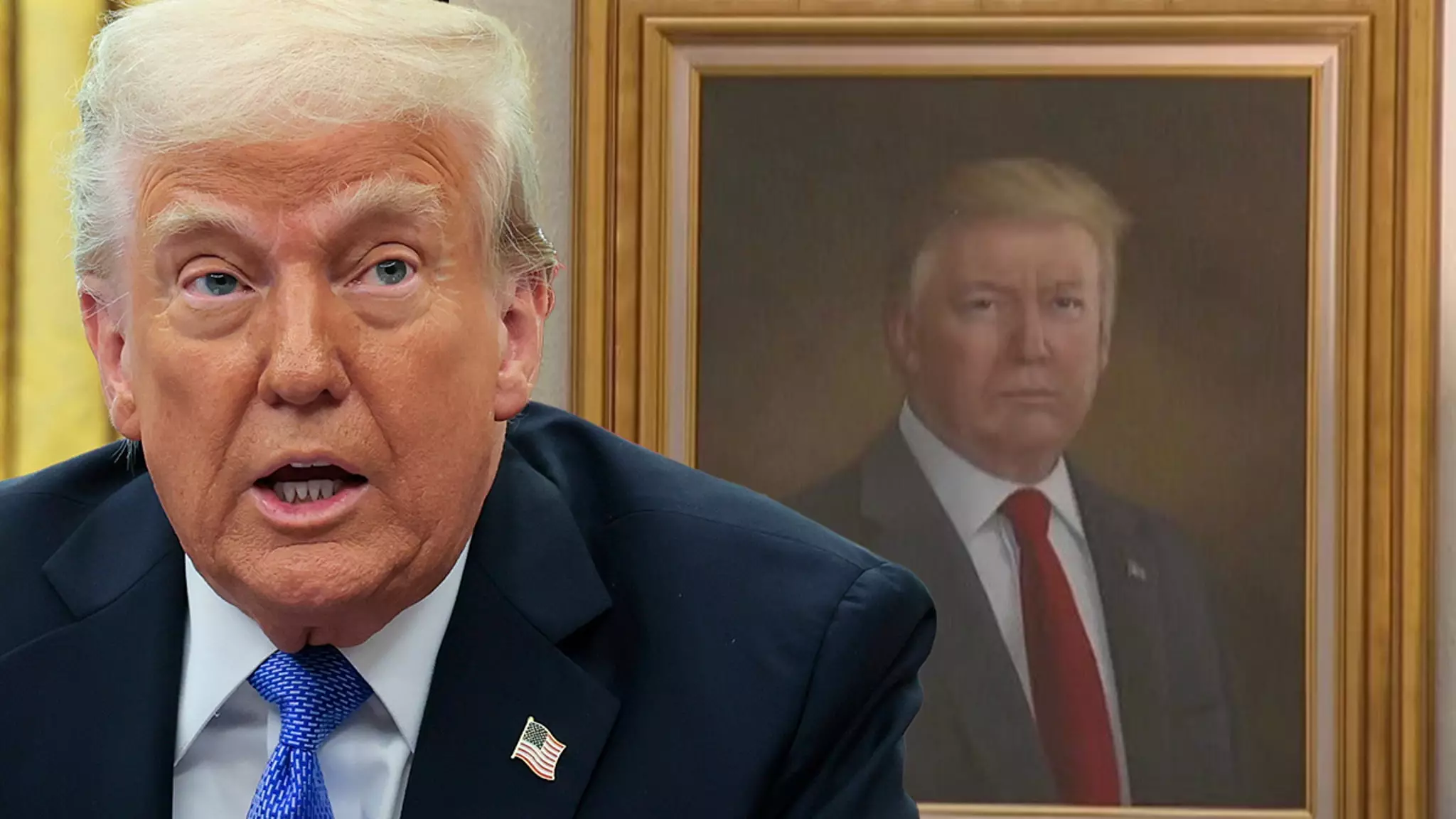In politics, few issues can ignite a firestorm quite like personal grievances turning public. Former President Donald Trump’s recent tirade over a portrait of himself displayed at the Colorado State Capitol illustrates this perfectly. At its core, this uproar reveals not just a battle over aesthetics but an insatiable need for validation and the relentless pursuit of a self-image that aligns with his public persona. Trump’s claim that the painting is “purposefully distorted” is emblematic of his longstanding focus on image management; it underscores a significant aspect of his character—he cannot bear even the slightest critique.
The Colorado State Capitol, built in 1901 and steeped in history, is a fitting backdrop for such a dispute. Its elegant architecture, crafted from Rose Onyx and White Yule Marble, contrasts sharply with the childish antics over artistic representation. Instead of embracing the honor of being among other painted dignitaries, Trump dwells on what he perceives as a personal slight. This rejection of artistic interpretation says much about the former president’s fragile ego and refusal to accept anything less than idealized versions of himself.
Comparative Critiques: A Clash of Portraits
In his social media outburst, Trump couldn’t help but engage in a peculiar competition of portraits, juxtaposing his image with that of Barack Obama. He chastises the artist, lamenting that whereas Obama appears “wonderful,” his own representation is, in his words, “truly the worst.” This strange fixation on how he is visually portrayed hints at deeper insecurities; Trump seems to view these artistic renderings as cultural endorsements of their subjects. The underlying implication is troubling: for Trump, public perception is intrinsically tied to visual representation, and failure in that arena is a crushing defeat.
The idea of a political portrait elicits much more than a mere likeness. It reflects the broader cultural narrative, and Trump’s insistence on attacking the artist’s credibility reveals a deep-seated fear of being marginalized—a sentiment not uncommon for a figure who has dramatically shifted the political landscape. His disdain for the artist, whom he accuses of losing talent with age, casts a pall over the entire profession, as he appears incapable of recognizing the inherent subjectivity in art.
Pushing the Envelope: A Governor’s Dilemma
The fallout now lands squarely on Governor Jared Polis’s shoulders, as Trump calls for the removal of the painting and throws a rhetorical grenade aimed directly at Polis’s integrity: “He should be ashamed of himself.” This demand thrusts the governor into a precarious position—with the eyes of the public scrutinizing his response. Will he capitulate to the former president’s request for censorship, or will he uphold the values of freedom of expression that underpin American democracy?
In an era where political dialogue often devolves into personal attacks, this artistic quarrel exemplifies an unsettling trend. It highlights how profound the intersection is between personal identity and political representation. The real questions bubble beneath the surface: How do we as a society define dignity in public life? Is it more reflective of one’s actions, or is it now inextricably linked to the ability to control one’s image? As we watch the unfolding drama over a mere painting, we must also contemplate the broader implications of political caricature in a rapidly evolving cultural landscape.

